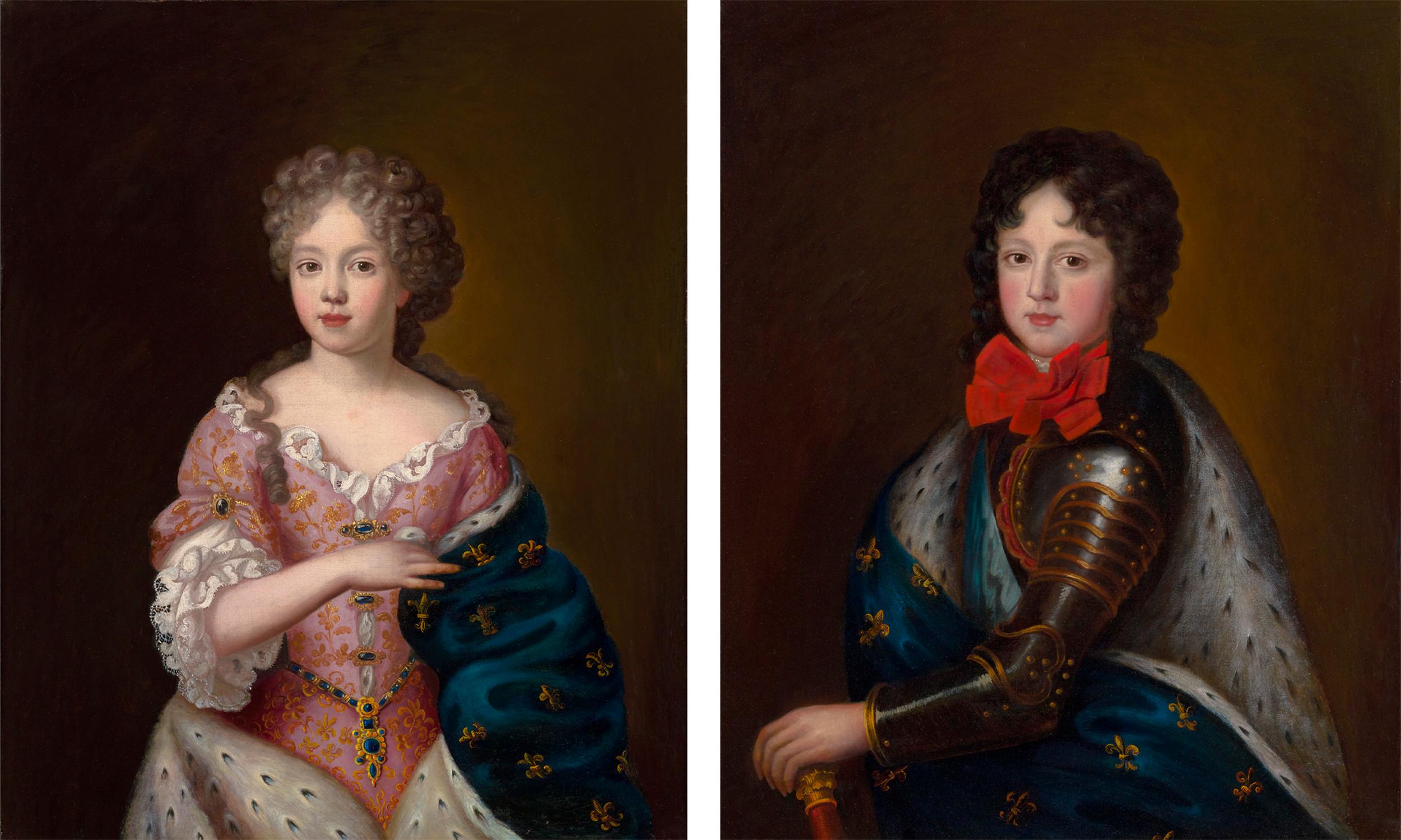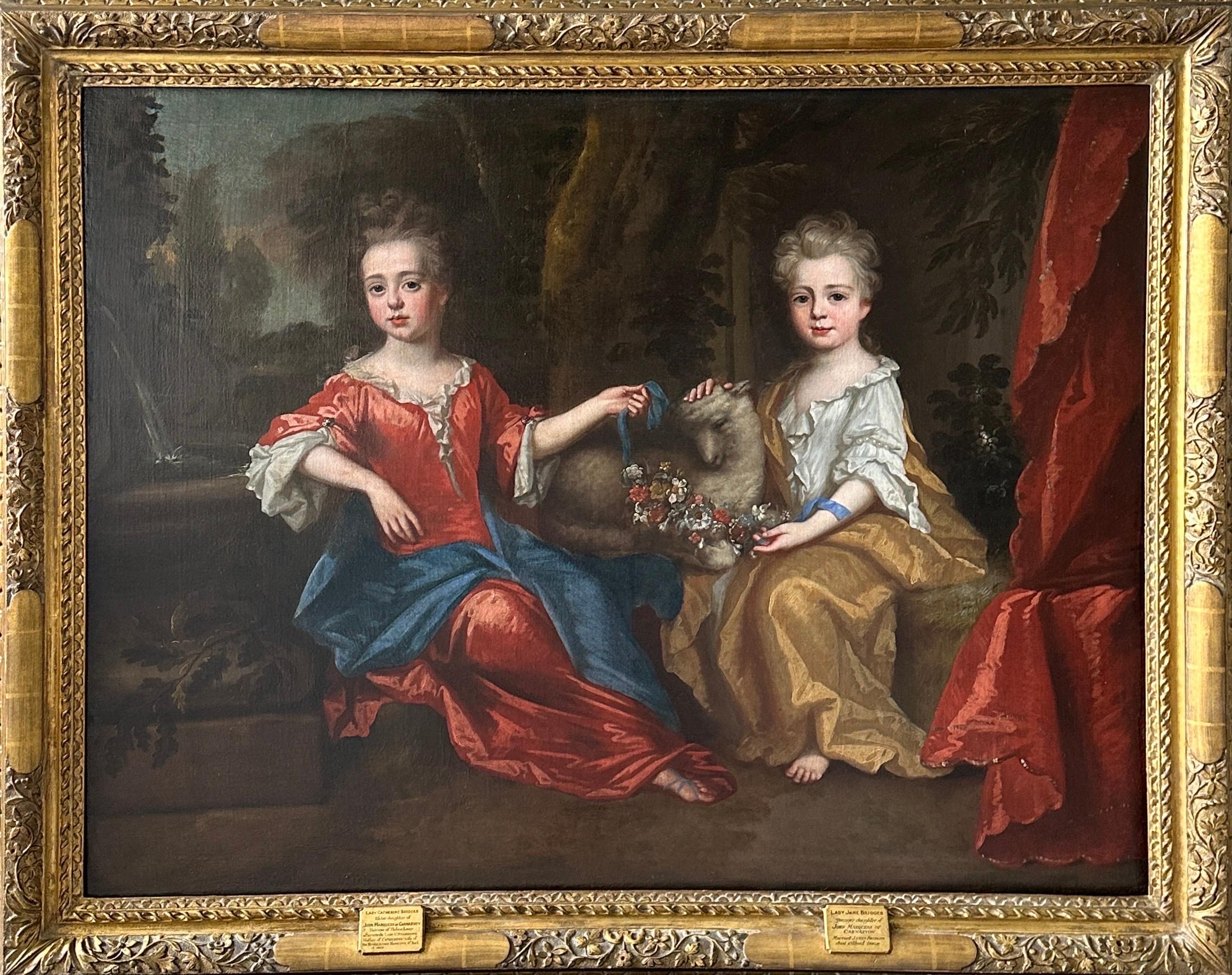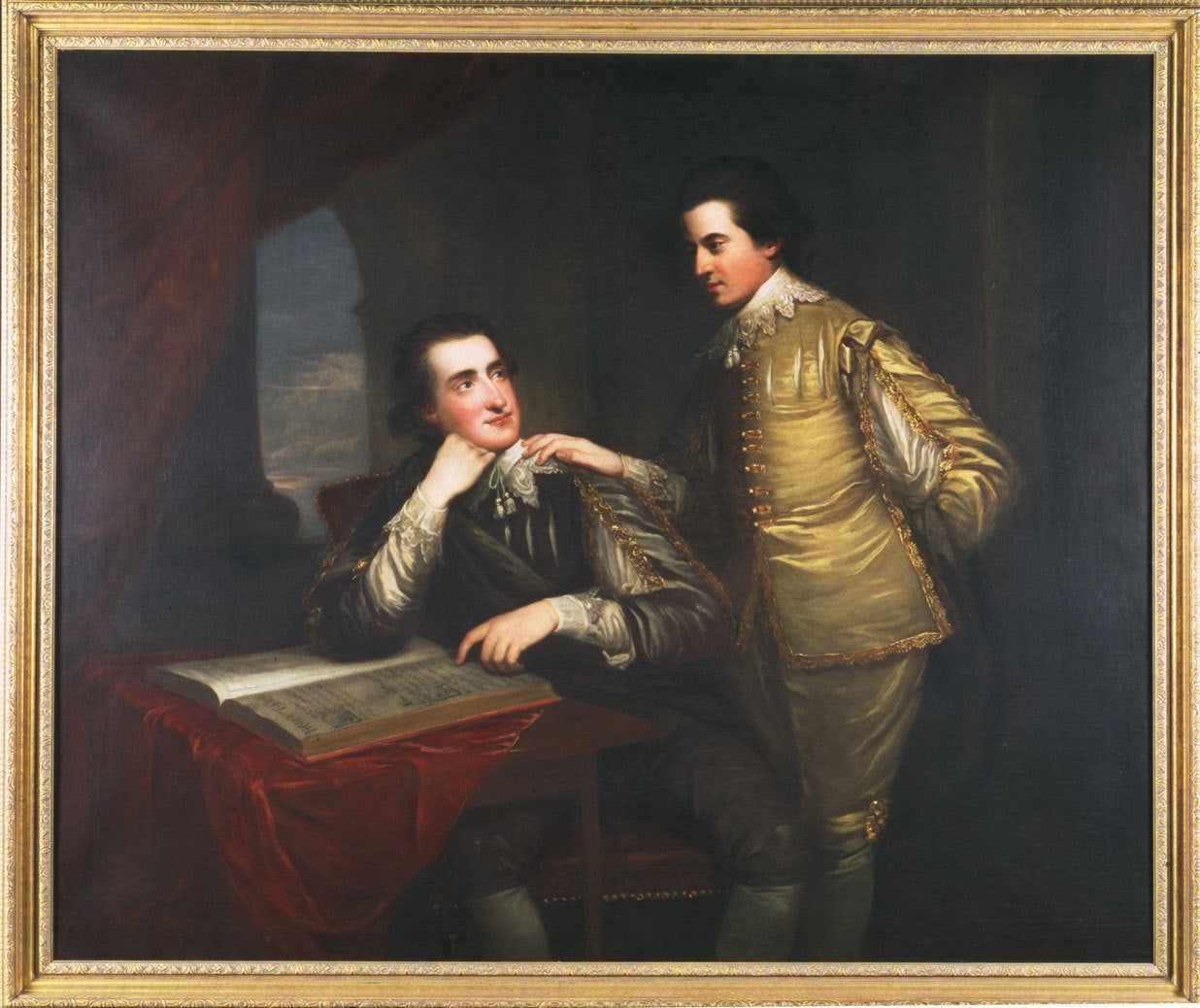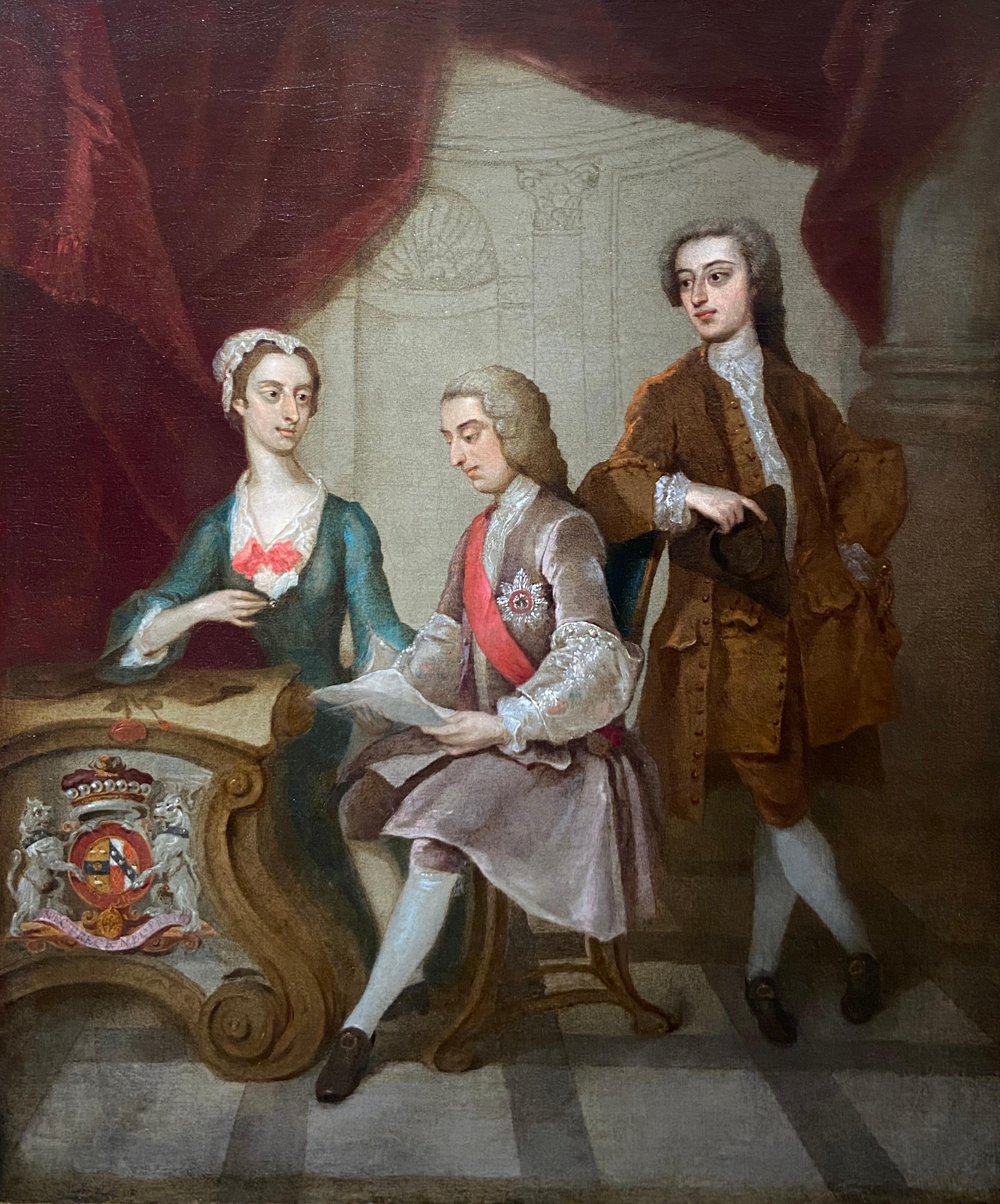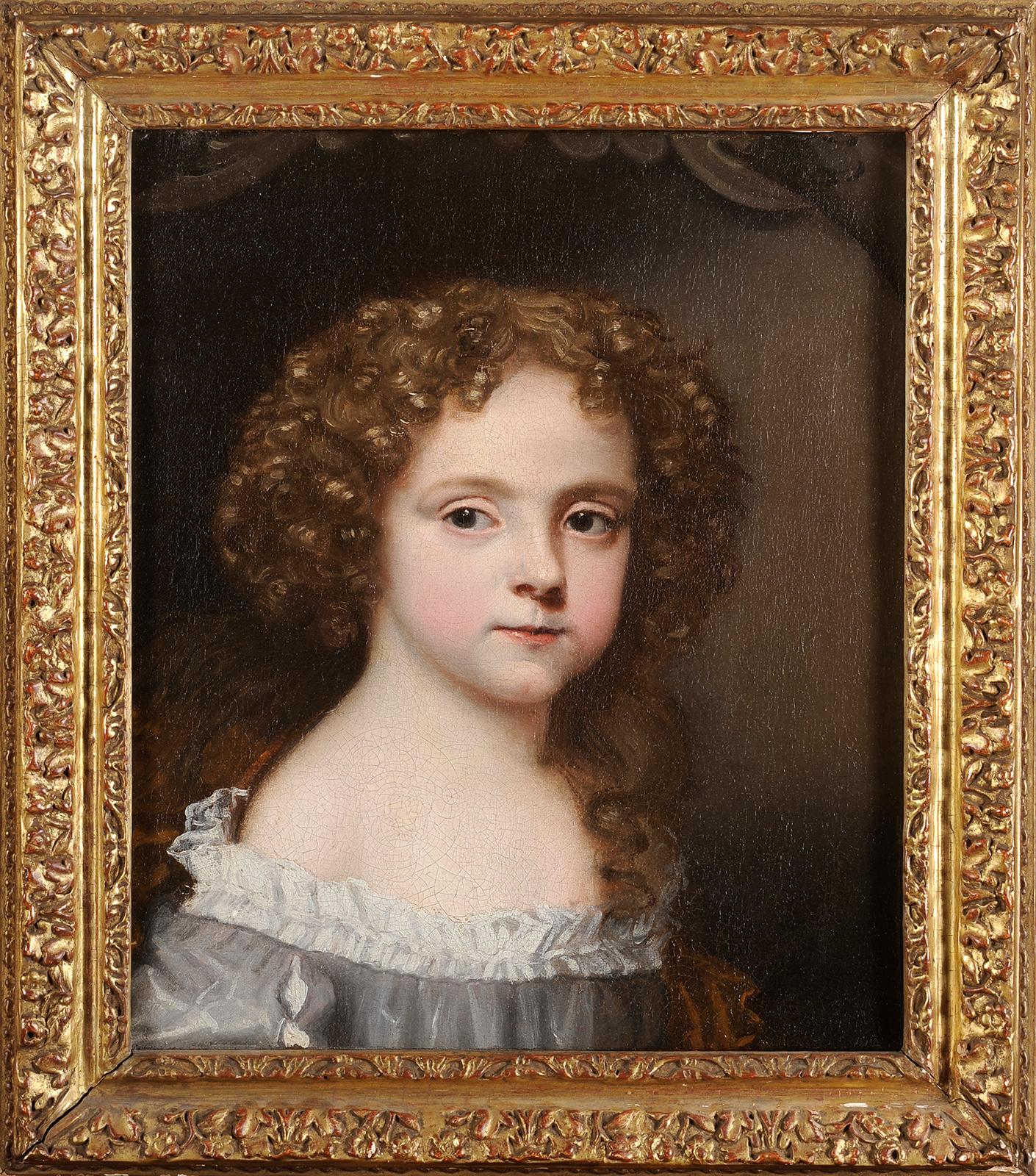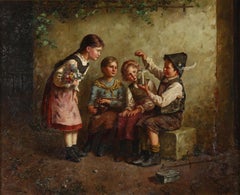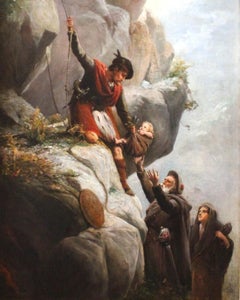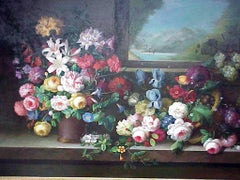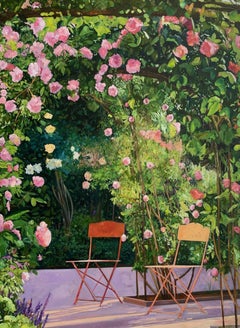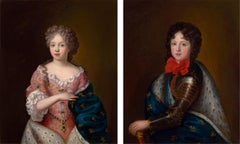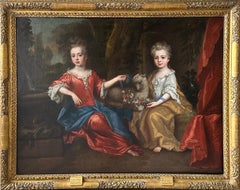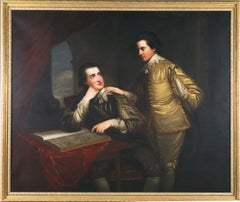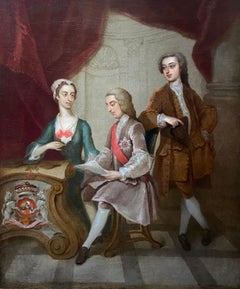Items Similar to John and Thomas Young
Want more images or videos?
Request additional images or videos from the seller
1 of 5
Philippe MercierJohn and Thomas Young
$32,500
£24,597.47
€28,242.81
CA$46,298.95
A$50,212.31
CHF 26,373.41
MX$609,916.91
NOK 330,021.51
SEK 310,733.68
DKK 210,852.07
About the Item
Philippe Mercier (also spelled Philip Mercier; 1689 – 18 July 1760) born in Berlin, was an artist of French Huguenot descent from the German realm of Brandenburg-Prussia (later Kingdom of Prussia), usually defined to French school. Active in England for most of his working life, He was influenced by Watteau and later by Chardin. From perhaps about 1716 he was in London; by 1739 he was working chiefly in Yorkshire. He returned in 1751 to London, and died there. Mercier is considered one of the first practitioners of the Rococo style, and is credited with influencing a new generation of 18th-century English artists. Numerous portraits by him exist.
- Creator:Philippe Mercier (1689 - 1760)
- Dimensions:Height: 44.5 in (113.03 cm)Width: 50.5 in (128.27 cm)
- Medium:
- Period:
- Condition:
- Gallery Location:Naples, Florida
- Reference Number:Seller: IAP00431stDibs: LU32214769832
About the Seller
5.0
Vetted Professional Seller
Every seller passes strict standards for authenticity and reliability
Established in 1992
1stDibs seller since 2013
85 sales on 1stDibs
Typical response time: 5 hours
- ShippingRetrieving quote...Shipping from: Naples, FL
- Return Policy
Authenticity Guarantee
In the unlikely event there’s an issue with an item’s authenticity, contact us within 1 year for a full refund. DetailsMoney-Back Guarantee
If your item is not as described, is damaged in transit, or does not arrive, contact us within 7 days for a full refund. Details24-Hour Cancellation
You have a 24-hour grace period in which to reconsider your purchase, with no questions asked.Vetted Professional Sellers
Our world-class sellers must adhere to strict standards for service and quality, maintaining the integrity of our listings.Price-Match Guarantee
If you find that a seller listed the same item for a lower price elsewhere, we’ll match it.Trusted Global Delivery
Our best-in-class carrier network provides specialized shipping options worldwide, including custom delivery.More From This Seller
View AllThe New Pet
By Edmund Adler
Located in Naples, Florida
The New Pet
Category
20th Century Portrait Paintings
Materials
Oil
$14,600
Scottish Scene
By Alexander Rosell
Located in Naples, Florida
Scottish Scene
Category
20th Century Portrait Paintings
Materials
Oil
Still Life
Located in Naples, Florida
Still Life
Category
20th Century Still-life Paintings
Materials
Oil
$5,800
La Tonnelle Aux Roses
Located in Naples, Florida
La Tonnelle Aux Roses
Category
21st Century and Contemporary Landscape Paintings
Materials
Oil
A Trompe L'Oeil Panel
Located in Naples, Florida
A Swedish School oil on panel Trompe L'Oeil painting of a coastal landscape bordered by blossoming flowers.
Framed - 20 x 27 Inches
Unframed - 15.25 x 22.25 Inches
Category
Early 20th Century Impressionist Landscape Paintings
Materials
Oil
Albert Mathys - The Weedes
By Albert François Mathys
Located in Naples, Florida
Albert Mathys - The Weedes
Category
20th Century Portrait Paintings
Materials
Oil
You May Also Like
Pair of Royal Portraits of the Duke and Duchess of Burgundy
By Pierre Gobert
Located in New Orleans, LA
Follower of Pierre Gobert
18th century French
The Duke and Duchess of Burgundy
Oil on canvas
Refinement and intricacy characterize these royal portra...
Category
18th Century Portrait Paintings
Materials
Canvas, Oil
18th century portrait of sisters Lady Catherine and lady Jane Brydges
By James Maubert
Located in Bath, Somerset
This large double portrait depicts the sisters Lady Catherine and Lady Jane Brydges, the daughters of John Brydges, the Marquess of Carnarvon (1703-1727). They are seated on a stone...
Category
Early 18th Century Old Masters Portrait Paintings
Materials
Canvas, Oil
Portrait of George and Edward Finch-Hatton in Van Dyck Dress
By David Martin
Located in New York, NY
Appointed Portrait Painter to the Prince of Wales in Scotland in 1785, David Martin was the leading Scottish portrait painter of his generation. The artist is best known in the United States for his portrait of Benjamin Franklin, which is in the White House collection, Washington, D.C. The sitters depicted in this double portrait were the sons of the British diplomat Edward Finch-Hatton. George (1747-1823), later of Eastwell Park, Kent, is shown seated, reading an ancient charter or medieval manuscript...
Category
18th Century and Earlier Paintings
Materials
Canvas, Oil
William, 1st Viscount Bateman and Family
Located in London, GB
Oil on canvas
Image size: 24 x 18 1/2 inches (61 x 47 cm)
Gilded wood framed
Provenance
Estate of Judge Davis Norton and Florence Edelstein.
William Bateman was a British Whig politician who sat in the House of Commons between 1721 and 1734. He was made Knight Companion of the Order of the Bath...
Category
Early 18th Century Figurative Paintings
Materials
Canvas, Oil
Portrait of William Stonestreet - Dutch Golden Age 17thC art oil painting
Located in Hagley, England
This superb Dutch Golden Age portrait is attributed to circle of Dutch artist Wybrand Simonsz de Geest. Painted in 1666 it is a full length portrait of a young William Stonestreet. He is holding the paw of a clipped little white dog with drapes and clouds beyond. (It was common practise to dress young boys in dresses up to the age of about 6 or 7 when they were 'britched' or wore britches). An excellent example of Dutch Golden Age art that wouldn't look out of place in a museum.
Wm Stonestreet 1666, Prebend of Selsely is inscribed top left.
Provenance. Berkshire estate.
Condition. Oil and canvas, 44 inches by 36 inches and in good condition.
Frame. Housed in an ornate gilt frame, 52 inches by 44 inches and in good condition.
Wybrand Simonsz. de Geest (16 August 1592 – c. 1661) was a Dutch Golden Age portrait painter from Friesland in the Netherlands. Wybrand de Geest was born and died at Leeuwarden. He learned painting from his father, Simon Juckesz, a stained glass worker. He studied later with Abraham Bloemaert. From 1614 to 1618 he travelled in France and Italy on a Grand Tour. In 1616 he met up with Leonard Bramer in Aix-en-Provence. While in Rome he became a member of the painters' circle known as the Bentvueghels. He earned the nickname 'De Friesche Adelaar', or "the Frisian Eagle". De Geest married Hendrickje Fransdr Uylenburgh in 1622, a niece of Saskia van Uylenburgh...
Category
1660s Old Masters Portrait Paintings
Materials
Oil
$26,393 Sale Price
20% Off
Young girl portrait
By Jacob Ferdinand Voet 1
Located in BELEYMAS, FR
Circle of Jacob Ferdinand Voet
Portrait of a Little Girl
Oil on canvas
H. 44 cm; W. 38 cm
This delicate portrait of a child, from the circle of Jacob Ferdinand Voet, demonstrates th...
Category
1690s French School Portrait Paintings
Materials
Canvas, Oil
More Ways To Browse
French Huguenot
Philippe Mercier
Warhol Studio 54
Woman Smoking Art
1800 Oil Painting Portrait
Abe Lincoln
Hollis Dunlap
Indian Girl
John Winston
Oil Painting Of King George V
Oil Portraits Of Fisherman
Pompeo Batoni
Princess Diana Art
Swedish Oil Portrait
Turkish Portrait
1835 Portrait
Gay Portrait
Giovanni Francesco Barbieri
